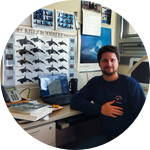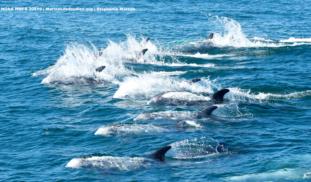Please wait...
About This Project
Marine Life Studies
Very little is known about the ecology of Risso's dolphins inhabiting the waters of the Pacific Northwest. For example population size, distribution, occurrence, and foraging habits are sparse in detail. At Marine Life Studies we have collected over 10 years of data on Risso's dolphins inhabiting Monterey Bay, California. Using photo-identification, UAV's, movement patterns, and foraging observations, we hope to produce details on the natural history of this charismatic species.

Browse Other Projects on Experiment
Related Projects
How do polar bears stay healthy on the world's worst diet?
Polar bears survive almost entirely on seal fat. Yet unlike humans who eat high-fat diets, polar bears never...
Uncovering hidden insect diversity associated with a likely undescribed gall-forming midge
Does a likely undescribed species of gall-forming midge (pers. comm. Ray Gagné) on Eriodictyon plants (Yerba...
Macrofungi of the California archipelago
The eight islands of the California Archipelago are a well-studied biodiversity hotspot — but we know almost...




